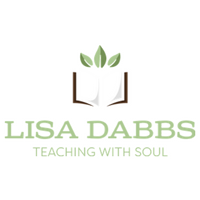5 Steps To Better Lesson Planning
 Learning to write a good, strong lesson plan is the backbone of confident teaching. Without a plan, you can kiss that goal of supporting your learners to succeed goodbye and your students will definitely suffer in the long run.
Learning to write a good, strong lesson plan is the backbone of confident teaching. Without a plan, you can kiss that goal of supporting your learners to succeed goodbye and your students will definitely suffer in the long run.
When we talk about writing a lesson plan, there are key components that need to be in place. It’s not enough to cite a standard and bullet point your way through it. It’s going to take effort and you’re going to need to put some well developed thought into the process. Does this mean there can’t be room for serendipitous learning? Of course not. It’s just that a poorly planned lesson, more often than not, will end up being a clunker.
The lesson planning process can be challenging, so let’s take a look at 5 effective steps to better lesson planning.
1. Have an Objective
The biggest mistake that I observed when reviewing lesson plans for my teachers was that they hadn’t fully thought the lesson through. They had the textbook pages cited, pages to be read prepared, but they didn’t have their “eye on the prize”. What I mean by that is…they hadn’t taken the time to ask themselves, “What are my students going to be able to know and be ready to do when this lesson is over?” It’s as if they’d grabbed all the ingredients off a recipe card, baked the cake, and then didn’t have a clue what it was supposed to look or taste like. Without having the end game clearly in mind, meaningful learning is not going to take place. All the parts of the lesson plan will come together if you’re careful to give that objective your full attention.
2. Where are our materials?
Now that you have that great lesson well planned, there’s no doubt that you’ll need a good materials list to accompany it. Your “materials list” is that slew of resources, articles or manipulatives that you’ll need to make this lesson shine. It’s important to organize everything you need prior to the lesson so that it can flow smoothly. There is nothing worse than walking into a classroom and observing a teacher struggling to grab this and that while teaching a lesson. Meanwhile, students become increasingly unfocused. Let’s set our expectations for ourselves high and not shortchange our students. Double check that all your materials are in order and available and be ready to launch! Consider asking the students to help you get things prepared and include them in that process.
3. What’s your Hook?
Lesson plan is a go and materials are ready! Now…how are you going to hook your student’s attention and keep it? Too many times, I see teachers launching right into the textbook or lecture part of their lesson without an attention-grabbing “hook.” Don’t your students deserve a little more time and focus on this area? The answer is: yes, they do! It doesn’t matter the grade level – all kids need to feel a connection to the lesson. You can bring that to them in your lesson lead-in via video, movie clip or challenging question.. Make it fun, creative, and surprising.
4. Step through your Procedures
Working up how to best proceed in your lesson is important. If we return to the cake recipe analogy, we have our procedures for adding the ingredients to the mixing bowl, but if we neglect to follow them, we might end up with a disaster. The same is true for our lessons. The majority of our lesson procedure must include, among other things: activation of students prior knowledge, teaching and learning activities, and questions to guide student thought. Are you making sure that this happens in all your lessons? You should be.
5. It’s a wrap!
The lesson was a huge success and students loved it! Or did they? How do you know if they “got it?” Did you ask important closing questions? Did you do a quick assessment as students left the room? You can use all kinds of varied activities to check for understanding that don’t include formal test taking. Remember to check in with students throughout the lesson. You’ll need to do this to see what your next steps might be, even as you are working within the lesson. Wrapping up the lesson by checking for understanding sometimes gets lost in the busy-ness of the day. Make sure you don’t let this important last step get lost in the shuffle.
Are you already doing a bang up job in the lesson writing process? Could you use some extra resources? Check out this Pinterest Board with helpful ideas.
Thanks for reading! If you enjoyed this post, please subscribe to TeachingWithSoul and connect with me on Twitter.
This post originally appeared here on Kids Discover, which was founded in 1991 by a publishing professional and devoted parent with a great idea. And today, more than 20 years later, still a family-owned media company with a mission and a passion—educating and entertaining kids.
2 Comments
Submit a Comment
LISA DABBS
Wife. Mom. Educator. Author. She started her career as an elementary school teacher in Southern California. In this role as teacher, she assisted with a grant project and became the Project Director of a Language and Literacy program. Read more
CONNECT WITH ME




The lesson plan is very helpful to the student.
http://careers-schools.com/
I love your number one! There are three steps to lesson planning: The what, the how and the why. Most teachers start with the what and the how and the better teachers start with the why. Especially with the Common Core, the why is key now. It is frustrating to see other teachers find the standards after they create the lesson.